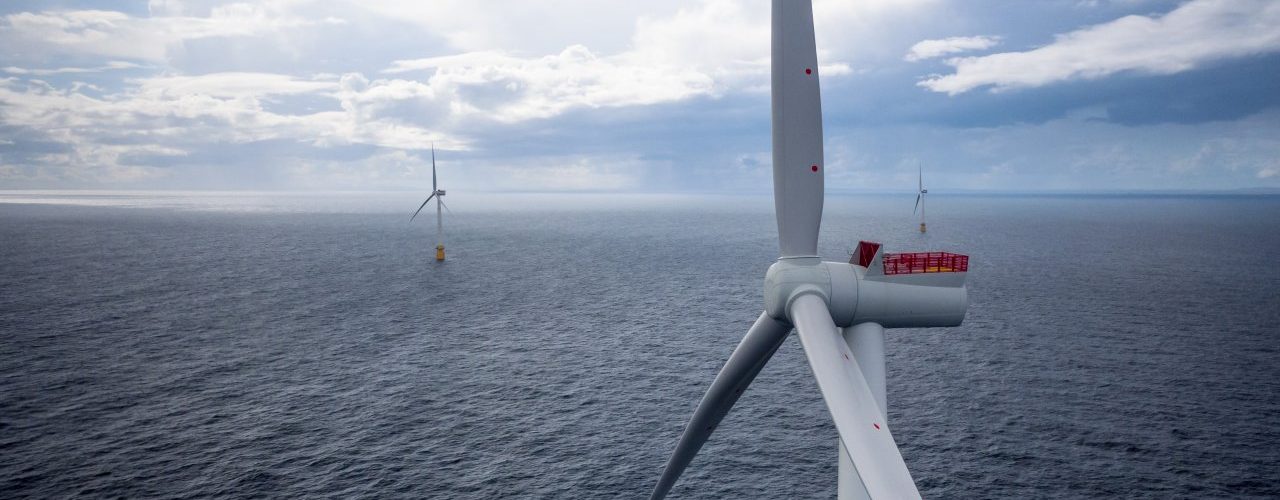Studies look at electrification from shore, wind energy as potential solutions for future projects
ST. JOHN’S, N.L. — A pair of newly-released studies highlight ways Newfoundland and Labrador’s offshore oil sector can go greener in the future through the use of clean power.
Wind energy and electrification via the shore are two options covered in the studies commissioned by the Newfoundland and Labrador Environmental Industry Association (NEIA), the Newfoundland and Labrador Oil and Gas Industries Association (Noia), and the Oil and Gas Corp. of Newfoundland and Labrador. Financial support to conduct the studies came from the latter organization and the federal and provincial governments.
This is part of an industry effort to encourage clean technology opportunities within the sector. The provincial government has set a target to achieve net-zero carbon emissions by 2050, and Noia and NEIA have both expressed public support for this goal.
But public support can only go so far. The two studies offer a way to cut down carbon emissions linked to offshore projects significantly, as clean power sources like hydroelectricity and wind power would eliminate the need to use fuel gas burned onsite for power purposes.
Steve Emberley, subsurface manager for the provincial Oil and Gas Corp. (formerly Nalcor Energy-Oil and Gas), says fuel gas burning accounts for 60 per cent of carbon emissions associated with oil production.
Norway’s vision
Both studies spend a lot of time highlighting how Norway is powering its offshore operations. Transferring power from shore to offshore has been tackled in a number of oil and gas hot spots, including the North Sea, the Gulf of Mexico, and Australia and Brazil.
Wind energy as a power source for the offshore sector represents a newer frontier and by comparison is largely untested. However, Norway does have a pilot project in the works with its Hywind Tampen wind project, intended to power two Equinor offshore fields in the Norwegian North Sea. This will represent a first for the industry worldwide.
“One of the places you look at where the emissions are lowest in the offshore is Norway,” Emberley said. “I think by 2023, nearly half of their production will be from facilities that are electrified with power from shore. Like Newfoundland, they have a robust hydroelectric grid, so it’s green energy, renewable energy, and that’s run to the offshore to power their facilities.”
For Newfoundland and Labrador, Emberley said the big focus will be how to power future projects. The capital costs are substantial when considering either power from shore or wind energy as solutions for offshore electricity.
Depending on a host of factors, including water depth for the wind farms, the number of turbines involved and whether it’s a concrete gravity structure or floating production storage and offloading (FPSO) vessel, the capital cost for wind farms range from just over $500 million to almost $900 million (the latter figure involving a farm to power two FPSOs). Annual operating costs for the different scenarios covered in the wind energy study — carried out by Intecsea — range from $12.2 million to $21.6 million.
Shore to offshore
Transferring electricity from shore to offshore through the use of cables laid in trenches would carry a capital cost ranging from $1.3 billion to almost $1.6 billion.
Aker Solutions’ study of electrification from shore recommends routing power to the Orphan Basin via Trinity Bay, noting it would limit iceberg risk and require less trenching. A further study on determining the point to connect with the grid would be necessary.
Considering the substantial depth and distance from shore, the study recommended low-frequency AC distribution, using subsea transformers to act as distribution points to the FPSO.
While acknowledging the capital expense may be lower for wind power, Emberley said there are more technological challenges to solve when it comes to protecting wind turbines from icebergs.
“Over time, the thing is with the wind, being an intermittent source of power, the wind is not always blowing, so you’d still need backup power on the facilities,” Emberley said. “So, the emissions reduction may not be as high as you would get with power from shore, which would be running and a stable source of electricity all the time.”
Electrification of offshore projects could also prove beneficial when it comes to selling power generated from Muskrat Falls, he added.
Emberley said discussions have already happened with BP Canada, operator for the Cape Freels prospect in the Orphan Basin, about the studies. Emberley’s employer has estimated there could be 3.8 billion barrels of recoverable oil there, and he said BP is excited about the studies.
“They’re hopeful that if they drill a well and make this discovery, knowing this (electrification potential) is available for them to utilize is very attractive. It makes our jurisdiction more attractive. I’m optimistic because they’re optimistic.”
—
Source: The Telegram | This text was excerpted from the media outlet cited on January 18, 2021 and is provided to Noia members for information purposes only. Any opinion expressed therein is neither attributable to nor endorsed by Noia.






